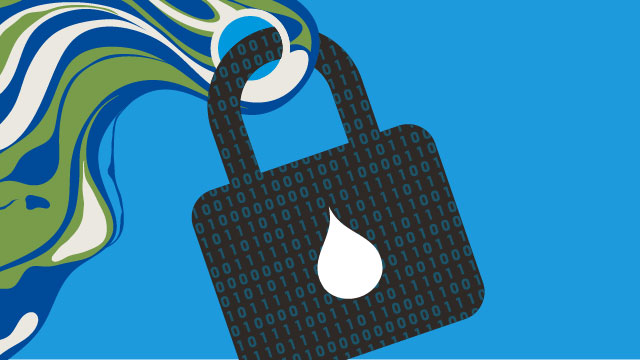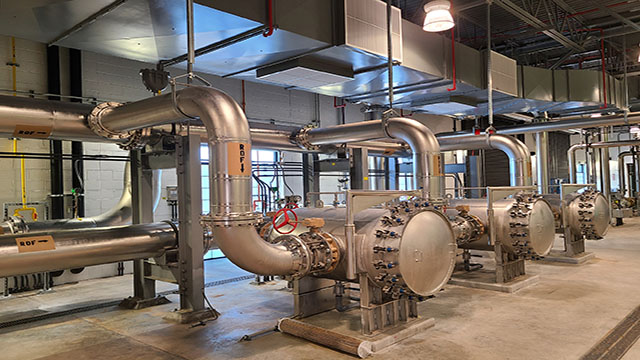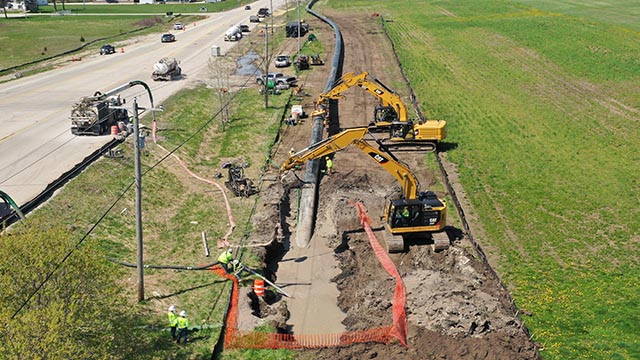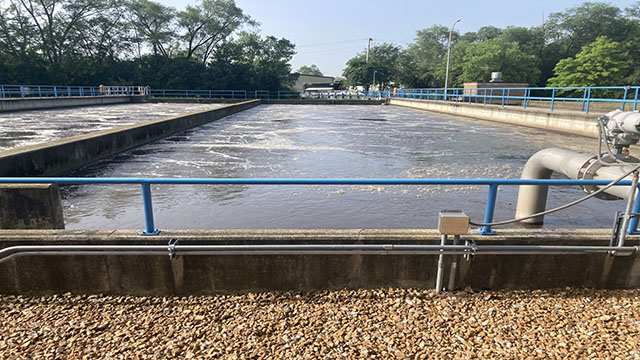By Zeynep K. Erdal, PhD, PE
Challenges Faced by U.S. Water Utilities
Across the United States, many communities face great challenges when it comes to ensuring the reliability of their water supplies. Residents and businesses expect their service providers to deliver clean and safe drinking water regardless of the factors impacting their community’s water supply. A high-profile example of this challenge can be found in the Southwest, where water systems are facing rapid population growth combined with extended droughts. Nationwide, infrastructure system vulnerabilities driven by climate change such as extended flooding are coinciding with other challenges such as environmental pollution due to point and nonpoint source discharges, impacting service nationwide. Within this volatile environment one thing is certain: every community must consider the resilience of their water systems.
From our experience working with leading water utilities — such as the Orange County Water District of California , which is recycling 130 million gallons per day (mgd), or the Hampton Roads Sanitation District of Virginia, which is building multiple facilities to capture almost every drop of their advance treated water — we know that water reuse is one solution that has a positive effect across a range of sustainable water infrastructure initiatives. A thoughtfully implemented water reuse program can:
- Solve the water supply dilemma by maintaining water supplies in specific communities and regions rather than disposing of this often increasingly limited resource.
- Reduce energy consumption through reductions in extensive pumping.
- Alleviate pollution through reductions in discharges into the environment.
- Reduce the strain on water systems, groundwater basins and even energy generation systems where hydroelectric energy is utilized.
- Sustainably preserve a predictable water supply source for communities, agriculture and businesses.
Though the benefits of water reuse are plentiful, implementing a new technology within a utility can be a daunting task. For example, utilities may wonder how a water reuse program or a One Water program can be successful and affordable. Luckily, the related technologies are much more accessible than many may believe.
Debunking Common Myths Around Water Reuse
Myth #1: “Water reuse requires new advanced technologies, so it is always costly.”
While some forms of water reuse require expensive technologies, and ensuring water quality can require large investment, water utilities do not always have to make large investments. Water reuse can be affordable when implemented with care and a technology-agnostic approach. To gauge the investment water reuse might require in your unique situation, consider the following:
Does your utility want to produce water purified to the level of potable water?
Meeting potable water standards requires the implementation of multiple treatment barriers to take wastewater (or “used water”) generated in communities to the highest standard both safely and reliably, but achieving this standard often costs more to implement. Even within the potable reuse realm, by including an environmental or engineered barrier, or blending with other supply sources, utilities can add the necessary reliability without inclusion of additional treatment steps.
Another sustainable, lower cost option is to implement non-potable reuse to replace the use of existing potable water sources. For example, agriculture systems, communities and commercial spaces require water to grow crops, maintain landscaped areas, sustain industrial facilities and commercial activities – all needs that can be met using non-potable reuse. Utilities should consider non-potable uses as a part of their integrated One Water plan to optimize their investments.
Does your utility need to upgrade aging infrastructure, comply with stricter discharge regulations, build a new ocean outfall, or deal with land subsidence and related infrastructure renewal?
To mitigate water reuse investments, the cost of individual investments can be deferred or allocated to water reuse facilities investment needs.
For example, the Melbourne Water Corporation’s Eastern Treatment Plant (ETP), which serves 1..6 million people and processes 40 percent of Melbourne’s wastewater each day, sought to reduce its environmental impact, and the plant chose to expand reuse. Black & Veatch selected a process train of ozonation, media filtration, ultraviolet irradiation and chlorination that provided significant improvements to the quality of discharge into the environment. The process produces Class A recycled water that can be used by the community, and the upgrade avoided the significant costs of extending the nearshore outfall.
Does your utility need to pump water across long distances to connect the water supply to the communities?
Implementing reuse within a community or at a facility where used water is generated can create a circular supply of local water, which can in return significantly reduce energy and pumping system costs. In Johnson County near Kansas City, Kansas, the newly implemented water reuse system at Tomahawk Creek is estimated to save rate payers $785 million in treatment costs over the next 35 years. Originally, the county had opted to send approximately 60 percent of its incoming flow to Kansas City, Missouri, treating only the remaining 40 percent at its existing Tomahawk Creek facility. Though this strategy initially helped to keep capital costs at bay, it led to an increase in overall annual operational costs of the wastewater treatment plant, as the cost of sending the water to the Kansas City facility was two to three times higher than treating the water locally.
To remedy this, the County decided to expand the Tomahawk Creek facility’s treatment capacity from 7 MGD to 19 MGD with up to 196 MGD of wet-weather treatment capacity. Further, they deployed the most advanced proven technologies across the operation allowing the county to save money by treating all wastewater on-site and generating a local water resource. Facility improvements included new influent pumping and coarse screening, five-stage biological nutrient removal (BNR) treatment, intermediate pumping, disinfection, tertiary filtration, solids processing and more.
Myth #2: “There are no regulations, or the regulations are too restrictive to implement water reuse.”
It is true that some states do not yet have existing regulatory frameworks to guide utilities who are interested in implementing water reuse. However, there is no need for system operators to reinvent the wheel. Organizations such as the WateReuse Association and states such as California have been implementing reuse under their own long-standing regulatory frameworks, which can serve as a starting point for discussions with regulators and be used in facility planning and design. Both California and Florida are currently working on developing potable reuse regulations, which will include the most advanced form of reuse. Despite the lack of regulatory frameworks in many states, utilities can look to current regulations and industry guidelines from leading organizations to create their own informed plans around water reuse.
Myth #3: “Public acceptance of water reuse is too big a barrier.”
Public acceptance is critical in the success of water reuse. Though some public resistance to potable water reuse remains, public education can close this gap, and is already at work across the nation. Key industry associations such as U.S. Water Alliance, WateReuse Association and leading utilities have been methodically developing public education campaigns which can serve as a starting point for all communities. In Orange County, California, San Diego, California and many more communities, such campaigns have already made significant headway in improving public opinion on water reuse. The help is out there – for any utility looking to sway public opinion, peers and industry associations are a great place to start.
Implementing Water Reuse in Your Community
When it comes to research, concept development and demonstration as well as planning, design and operations of facilities for water reuse, Black & Veatch helps utilities and their communities determine the best solutions to fit their unique needs. From advancing innovation in the application of water reuse for data centers to preserve potable water for other uses; to the global award-winning integrated resource recovery facility that produces water and nutrients for local agriculture while generating renewable energy in Paso Robles, CA; to The Guinness World Records™ title for the “most wastewater recycled to drinking water in 24 hours” holder Orange County Water District, Black & Veatch’s signature projects improve community sustainability, livelihoods, and quality of life.
As municipal utilities and industrial owners consider tackling water supply and resilience issues, Black & Veatch continues to develop solutions and advance water reuse as a central element of our communities’ water resilience toolbox.
Learn more about how Black & Veatch can help you realize your water resilience and reuse goals.








